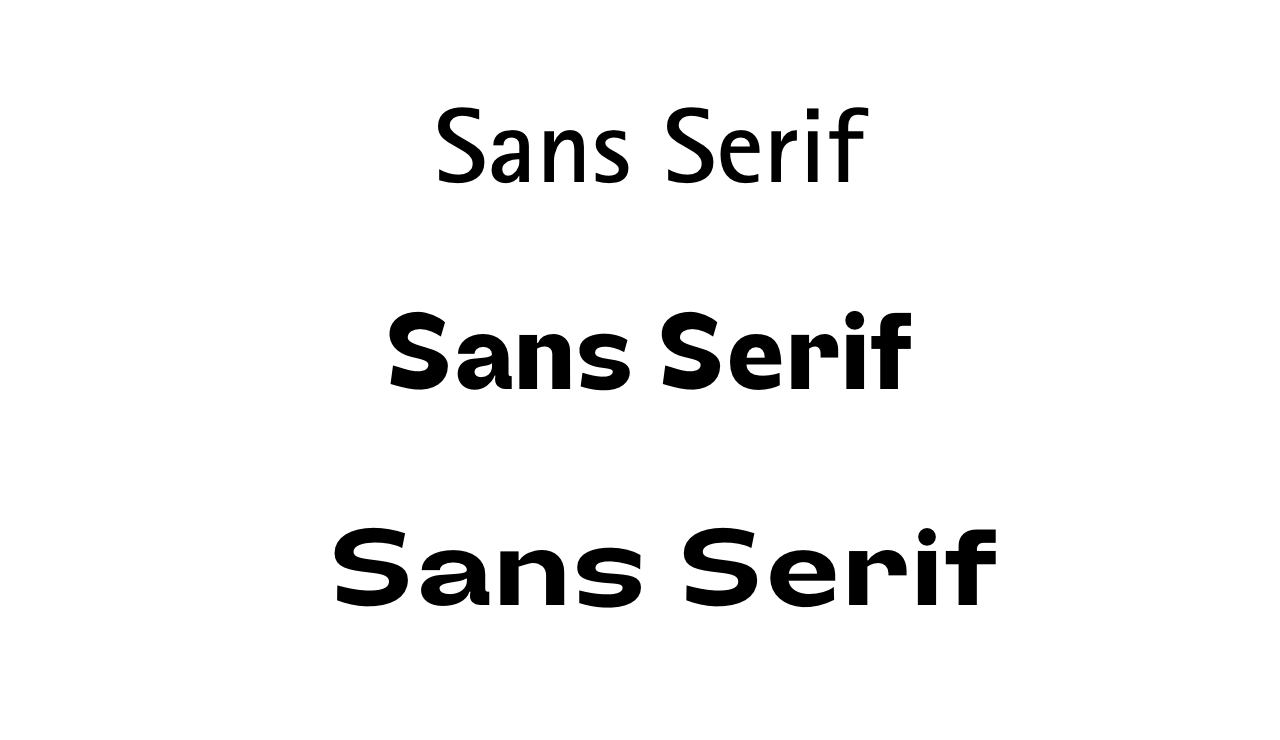
In the ever-evolving world of typography, sans serif fonts have emerged as a dominant force, embodying modernity, simplicity, and versatility. Defined by their clean lines and absence of decorative serifs, sans serif fonts offer a sleek and contemporary aesthetic that is well-suited to a wide range of design applications. From digital interfaces to print materials and branding, sans serif fonts have become a staple in the designer’s toolkit, offering endless possibilities for creative expression and communication. In this blog post, we’ll explore the allure of sans serif fonts, their unique characteristics, and how they can be used effectively in design.
- Clean and Minimalist Aesthetic: One of the defining features of sans serif fonts is their clean and minimalist appearance. By eschewing the decorative serifs found in traditional serif fonts, sans serif fonts offer a streamlined and uncluttered look that is well-suited to modern design aesthetics. This clean aesthetic makes sans serif fonts particularly effective for conveying simplicity, clarity, and professionalism in design projects.
- Enhanced Readability: Sans serif fonts are renowned for their excellent readability, especially in digital formats and small sizes. The absence of serifs allows for clear and unobstructed letterforms, making sans serif fonts easy to read even at low resolutions or on screens with varying pixel densities. This enhanced readability makes sans serif fonts a popular choice for website design, mobile apps, and other digital interfaces where legibility is paramount.
- Versatility and Adaptability: Sans serif fonts are incredibly versatile and adaptable, making them suitable for a wide range of design applications. Whether it’s a sleek and modern sans serif for corporate branding, a friendly and approachable sans serif for advertising, or a bold and impactful sans serif for headlines, there is a sans serif font to suit every project and aesthetic preference. This versatility makes sans serif fonts a favorite among designers seeking flexibility and creative freedom in their work.
- Contemporary and Timeless Appeal: Sans serif fonts have a contemporary and timeless appeal that transcends trends and fads. Their clean lines and modern aesthetic make them well-suited to a variety of design styles, from minimalist and understated to bold and expressive. Whether used in print or digital media, sans serif fonts convey a sense of sophistication and professionalism that resonates with audiences across diverse demographics and industries.
- Branding and Identity: Sans serif fonts are often used in branding and identity design to convey a sense of modernity, innovation, and reliability. Many well-known brands, such as Google, Apple, and Airbnb, utilize sans serif fonts in their logos and marketing materials to communicate their commitment to simplicity, clarity, and user-centric design. By associating themselves with sans serif fonts, brands can establish a strong visual identity that reflects their values and resonates with their target audience.
- Pairing with Other Fonts: Sans serif fonts pair well with a variety of other typefaces, including serif fonts, script fonts, and display fonts. Their clean and neutral appearance makes them ideal for pairing with more decorative or expressive typefaces, providing contrast and balance in typographic compositions. When combining sans serif fonts with other fonts, designers can create dynamic and visually engaging layouts that capture the audience’s attention and convey the intended message effectively.
When using sans serif fonts in design, it’s essential to consider several factors to ensure they are used effectively:
- Choose the Right Weight and Style: Select a sans serif font that complements the overall aesthetic and mood of the design. Experiment with different weights and styles to find the perfect balance between readability and visual impact.
- Mind the Spacing: Pay attention to letter spacing, line spacing, and kerning to ensure optimal readability and legibility, especially at smaller sizes or in dense blocks of text.
- Consider Context and Audience: Tailor the choice of sans serif font to the specific context and audience of the design. Different styles of sans serif fonts may be more appropriate for certain industries, demographics, or cultural preferences.
- Experiment with Typography: Don’t be afraid to experiment with typography and explore different combinations of sans serif fonts with other typefaces. By mixing and matching fonts, designers can create unique and visually engaging designs that stand out from the crowd.
In conclusion, sans serif fonts are a versatile and impactful tool in the designer’s arsenal, offering a clean and modern aesthetic that is well-suited to a wide range of design applications. Whether conveying simplicity and clarity in digital interfaces, establishing a strong visual identity in branding, or adding a contemporary flair to print materials, sans serif fonts have become indispensable in today’s design landscape. By understanding the unique characteristics and versatility of sans serif fonts, designers can leverage their power to create visually stunning and effective designs that resonate with audiences and leave a lasting impression.
